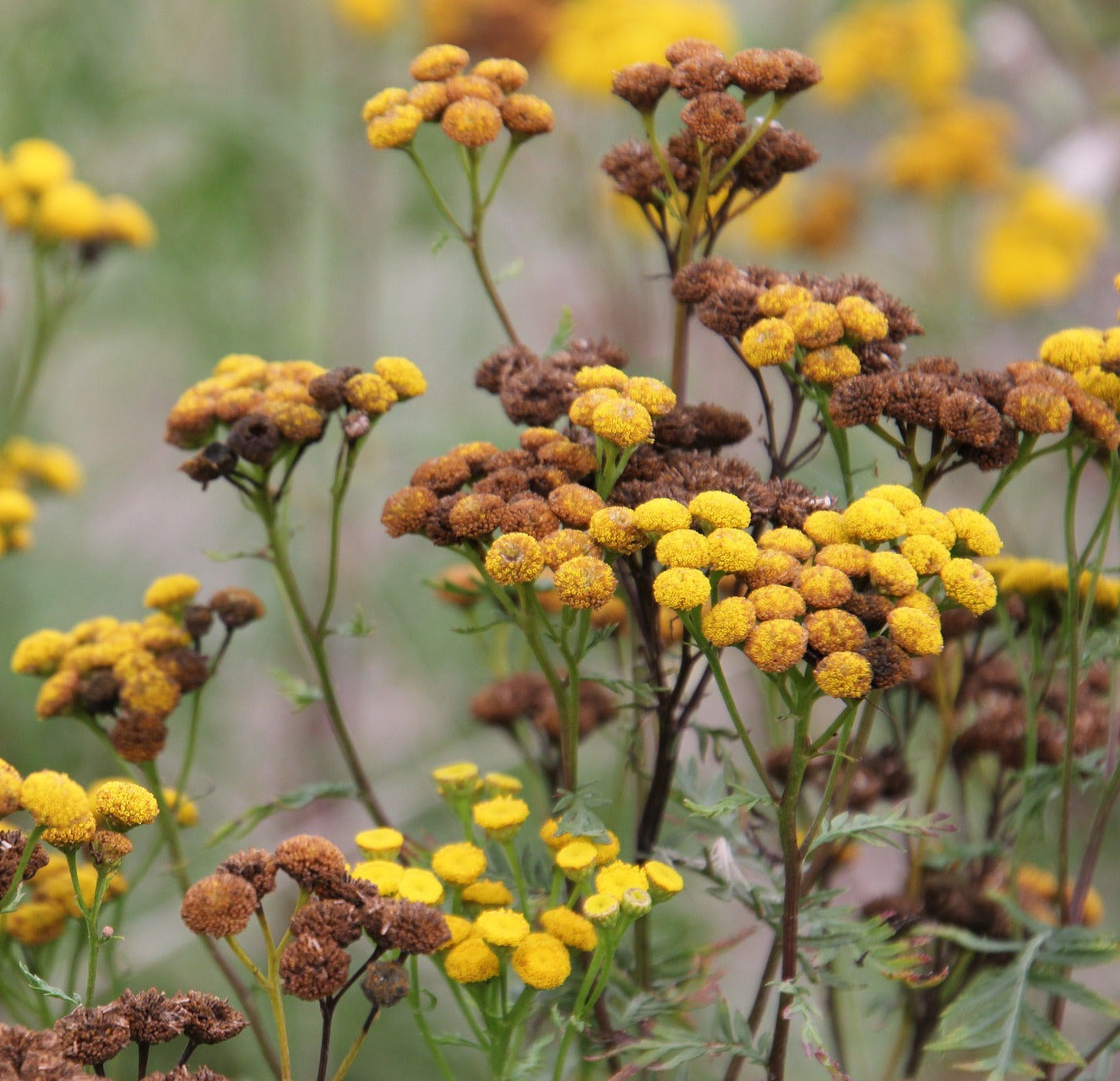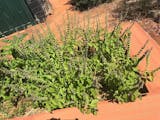The perennial tansy is a wild dye and medicinal plant with many uses. In medicinal terms, it regulates menstruation, aids digestion, is anthelmintic and analgesic, and is also suitable as an insect repellent and biological plant protection agent. Ideal for direct sowing, pot cultivation possible, sowing spring-summer, good for mixed culture, harvesting the shoot tips, flowers, seeds and leaves.
Description
Tansy is a very old, perennial wild shrub, dye and medicinal plant from Europe and Asia. The versatile medicinal herb has numerous bright yellow flower heads and finely feathered, fern-like leaves. With a strong growth, it spreads quickly via runners and seeds. Thanks to its essential oils, it exudes a distinctive, aromatic and spicy scent. Tansy can be used in many ways; in naturopathy, it regulates menstruation, promotes digestion, is anthelmintic and relieves pain. It is also suitable for slope stabilization, as an insect repellent or a fermented broth as a biological plant protection agent to keep whiteflies, lice, mites and other insects away. The species likes to grow on moist to dry pastures and always stretches its leaves towards the south, which is why it is also used to determine the direction of the compass. Tansy is poisonous. Skin reactions can be caused by contact. Pregnant women should avoid contact with tansy. Recommended for external use only.
Tansy is an important host plant for some caterpillars, butterflies and beetles.
General information
Plant family: Asteraceae
Life cycle: Perennial
Days to harvest: 150 days
Plant height approx.: 160 cm
Root type: Deep rooter
Nutrient requirements: Low
Water requirements: Low
Winter hardiness: Up to -30°C
Location: Sunny
Soil: Permeable, loamy, humus
pH value: 5.5 to 7
Sowing and planting information
Germination type: Light germinator
Sowing depth: 0 cm
Optimal germination temperature: 15-20 °C
Germination time: 5-10 days
Plant and row spacing: 30x40 cm
Germination ability of seeds: 2-3 years
Mixed culture
Optimal mixed culture: Potatoes, Cabbage, Cucumbers, Berry bushes
Unfavorable mixed culture: -
Sowing by climate zone
Subtropic climate (Mediterranean) (e. g. B. Portugal, Spain, Italy)
Direct sowing from February to June is recommended. The plants should ideally be planted in a sunny location.
Moderate climate (e. g. B. Germany, Switzerland, Poland)
Direct sowing from March to May is recommended. The plants should ideally be planted in a sunny location.
General recommendations
Direct sowing is recommended. Direct sowing should be treated with particular care as it may dry out or be carried away by small animals such as ants. After germination, thin out the plants to the specified plant spacing.
Tansy ideally prefers a soil that is slightly moist or dry, permeable, contains loam and some humus. It does not tolerate waterlogging.
Additional tips
Tansy sows itself generously. Slugs avoid this herb. Tansy broth helps against snails, mildew and lice. In order to quickly obtain a fine, crumbly and permeable soil with good nutrient and water retention capacity, it is recommended to also incorporate biochar and primary rock flour.
Type of propagation
Propagation occurs via seeds or root runners.
Plant care
Because the plants initially grow slowly, it is advisable to regularly weed surrounding herbs. Loosened, nutrient-rich soil and planting in mixed culture is sufficient. No fertilization necessary.
Other names
Botanical names: Tanacetum vulgare
English names: Common tansy
German names: Rainfarn, Wurmkraut, Drusendrud, Kraftkrud, Milchkraut, Pompelblume, Regenfahn
Portuguese names: Tanásia
Spanish names: Tanaceto
French names: Tanaisie
Origin
Country: Portugal



![Common Tansy [Tanacetum vulgare]](http://www.benjis.net/cdn/shop/files/Rainfarnwww.benjis.net.jpg?v=1697125811&width=1445)





